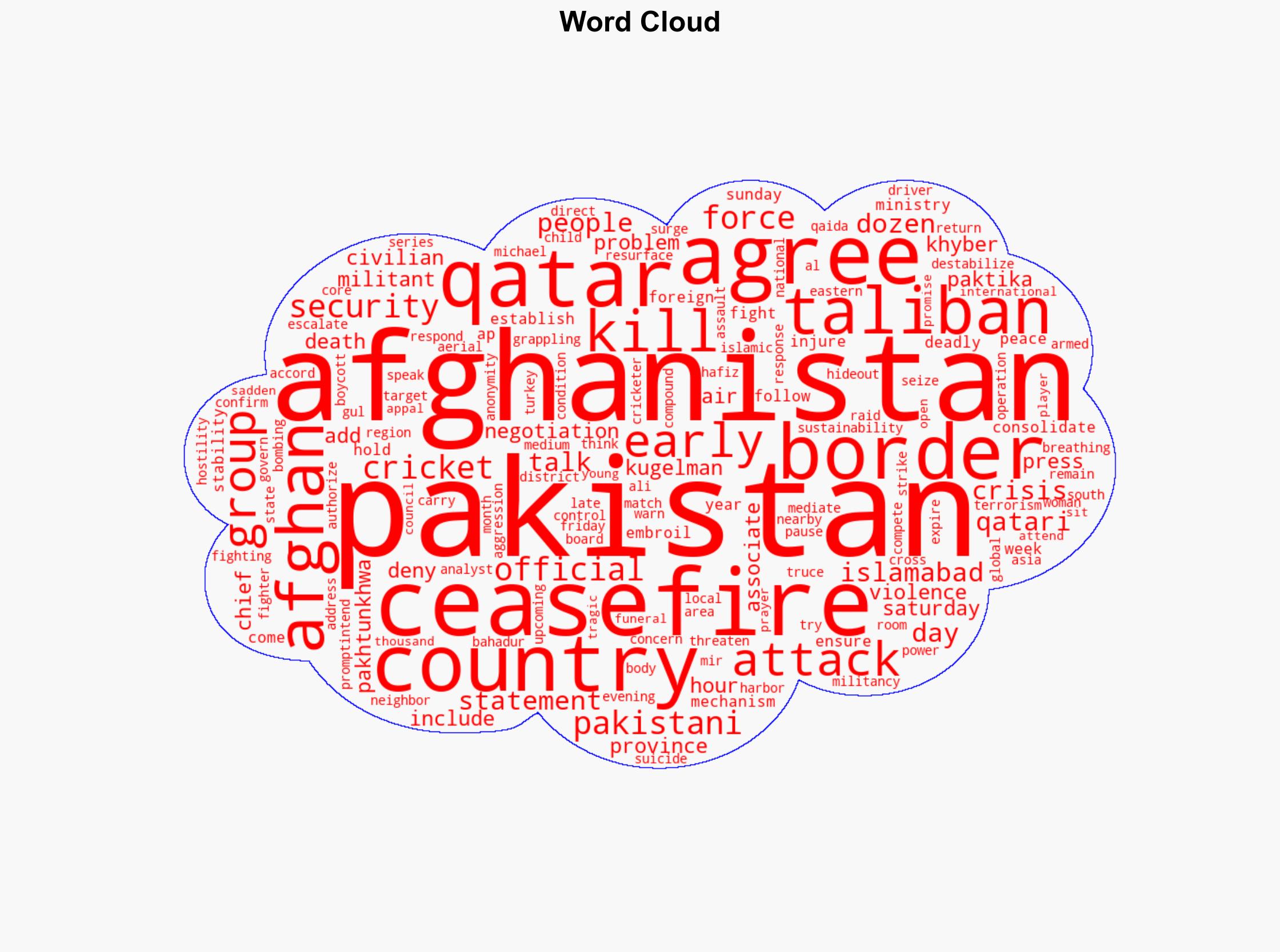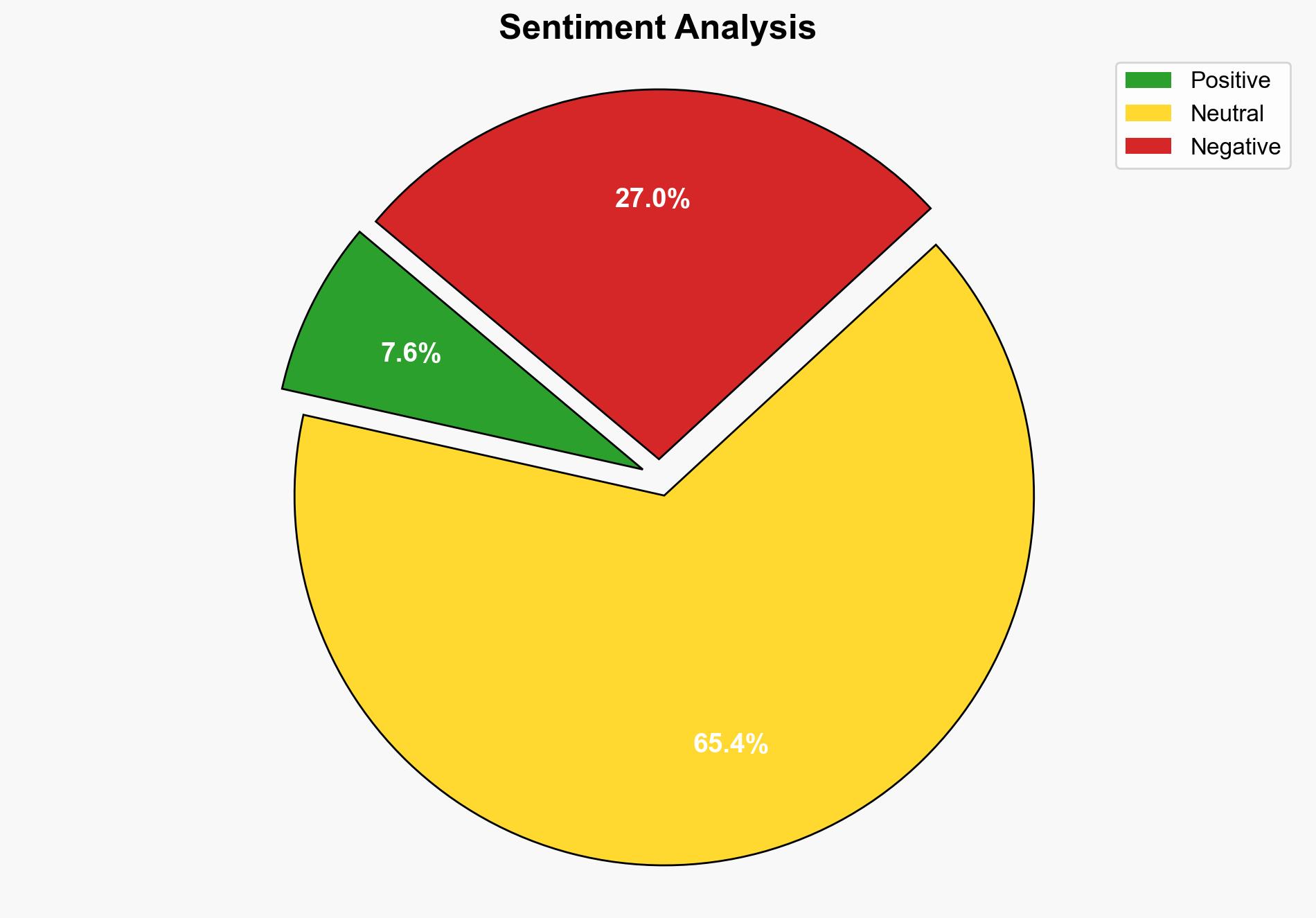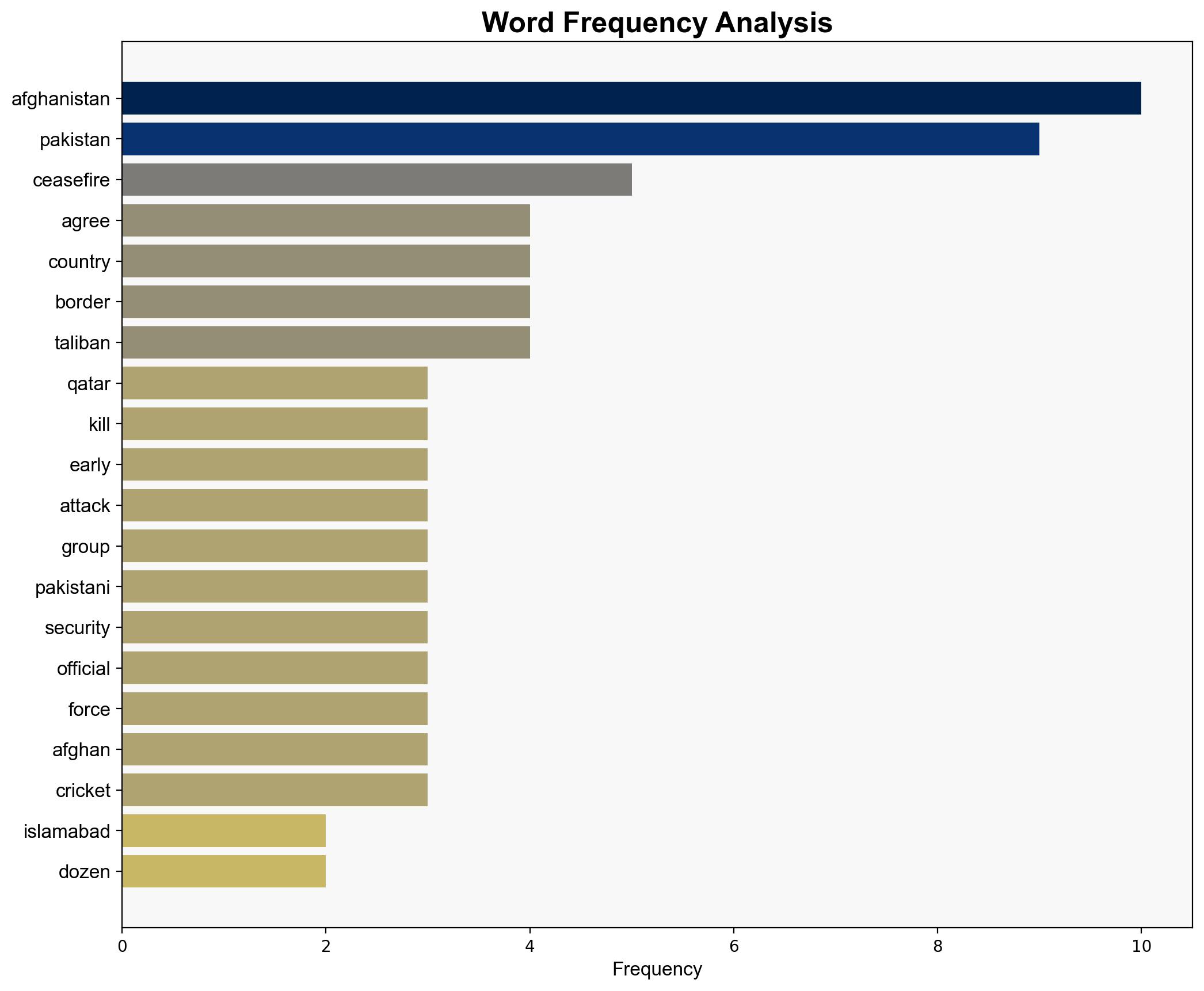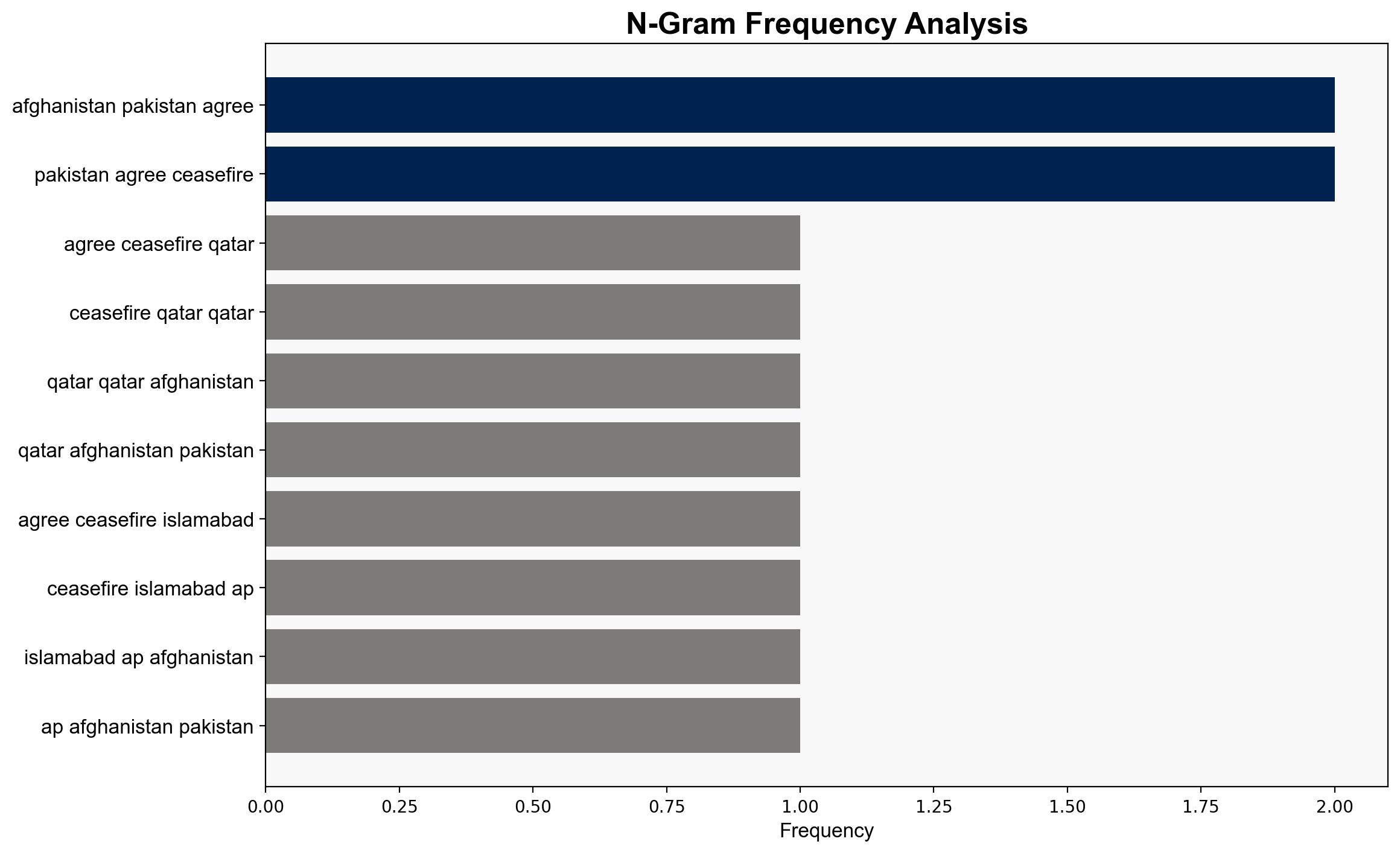Afghan and Pakistani delegations head to Doha for crisis talks – ABC News
Published on: 2025-10-18
Intelligence Report: Afghan and Pakistani delegations head to Doha for crisis talks – ABC News
1. BLUF (Bottom Line Up Front)
The most supported hypothesis is that the ceasefire between Afghanistan and Pakistan is a temporary measure intended to de-escalate immediate tensions, but underlying issues of cross-border militancy and sovereignty disputes remain unresolved. Confidence in this assessment is moderate due to the complexity of regional dynamics and historical tensions. Recommended action includes sustained diplomatic engagement and monitoring of militant activities to prevent further escalation.
2. Competing Hypotheses
Hypothesis 1: The ceasefire agreement is a genuine step towards long-term peace and stability, facilitated by effective mediation from Qatar and Turkey. This hypothesis suggests that both nations are committed to addressing core issues and preventing future conflicts.
Hypothesis 2: The ceasefire is a temporary tactical pause, primarily aimed at reducing immediate hostilities while both sides regroup and reassess their strategic positions. The underlying issues, such as cross-border militancy and territorial disputes, remain unaddressed, making future conflict likely.
Using ACH 2.0, Hypothesis 2 is better supported given the immediate resumption of hostilities post-ceasefire, the lack of concrete measures to address root causes, and historical patterns of conflict in the region.
3. Key Assumptions and Red Flags
Assumptions include the belief that both governments have control over militant groups within their borders and that external mediation can effectively resolve deep-seated issues. Red flags include the rapid breakdown of the ceasefire, the anonymity of sources, and potential bias in statements from involved parties. The absence of detailed plans for addressing cross-border terrorism is a significant blind spot.
4. Implications and Strategic Risks
The continuation of hostilities poses risks of regional destabilization, increased militant activity, and potential international intervention. Economic impacts could arise from disrupted trade and investment, while geopolitical tensions may strain relations with neighboring countries. Psychological impacts include heightened fear and insecurity among border populations.
5. Recommendations and Outlook
- Encourage sustained diplomatic dialogue with third-party mediation to address core issues, including cross-border terrorism and sovereignty disputes.
- Enhance intelligence-sharing mechanisms between Afghanistan and Pakistan to monitor and counter militant activities.
- Scenario-based projections:
- Best Case: Successful long-term peace agreement with effective mechanisms to address militancy.
- Worst Case: Escalation into full-scale conflict, drawing in regional powers.
- Most Likely: Periodic skirmishes with intermittent ceasefires, maintaining a cycle of instability.
6. Key Individuals and Entities
Michael Kugelman, Zabihullah Mujahid, Asim Munir, Hafiz Gul Bahadur group.
7. Thematic Tags
national security threats, counter-terrorism, regional focus





